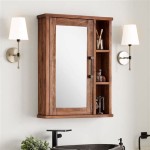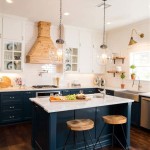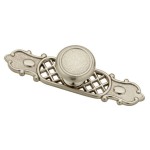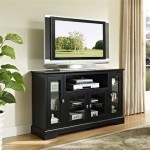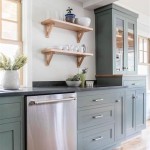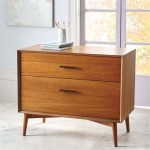Putting Hardware On Kitchen Cabinets: A Comprehensive Guide
Kitchen cabinet hardware, encompassing knobs, pulls, hinges, and other functional and decorative elements, plays a significant role in both the aesthetics and usability of a kitchen. Proper installation is crucial to ensure smooth operation, longevity of the cabinets, and a finished, professional appearance. This article provides a detailed guide to effectively putting hardware on kitchen cabinets, covering preparation, installation techniques, and troubleshooting common issues.
Before embarking on the installation process, careful planning is paramount. This involves selecting appropriate hardware styles that complement the overall kitchen design, determining the optimal placement for each piece, and gathering the necessary tools and materials. Rushing this preliminary stage can lead to errors, rework, and ultimately, a less-than-satisfactory outcome.
The selection of hardware should consider the style of the cabinets, the overall kitchen décor, and the user's personal preferences. For example, modern kitchens often benefit from sleek, minimalist pulls, while traditional kitchens might feature more ornate knobs and handles. The finish of the hardware should also coordinate with other elements in the kitchen, such as faucets, appliances, and lighting fixtures.
Accurate placement of hardware is essential for both aesthetics and functionality. Consistency in positioning across all cabinets creates a visually appealing and balanced look. Consideration should be given to the size and style of the cabinet doors and drawers when determining placement. For instance, larger drawers may require two pulls for improved stability and ease of use.
Effective hardware installation requires a range of tools, including a measuring tape, pencil, drill, screwdriver (both Phillips and flathead), drill bits, a level, and a center punch. A template or jig can also be invaluable for ensuring consistent and accurate hole placement. Having all necessary tools readily available will streamline the process and minimize the risk of errors.
Key Point 1: Preparing the Cabinets for Hardware Installation
The initial step in hardware installation involves carefully preparing the cabinet surfaces. This includes cleaning the doors and drawers to remove any dust, grease, or debris that might interfere with the installation process. A mild detergent and a soft cloth are typically sufficient for this purpose. Ensure the surfaces are completely dry before proceeding.
Next, the precise location for each piece of hardware must be marked. This is where careful measurement and planning come into play. Use a measuring tape and pencil to accurately mark the desired position for each knob or pull. A level can be used to ensure horizontal alignment, particularly for longer pulls. This step is critical for achieving a consistent and professional-looking result.
A center punch is a useful tool for creating a small indentation at the marked location. This indentation serves as a guide for the drill bit, preventing it from wandering and ensuring accurate hole placement. The center punch should be used with caution, applying gentle pressure to avoid damaging the cabinet surface. The size of the center punch should be appropriate for the size of the screw being used to attach the hardware.
Before drilling, it is important to select the correct drill bit size. The drill bit should be slightly smaller than the diameter of the screw being used to attach the hardware. This will allow the screw to grip the wood securely without stripping the threads. Using the wrong size drill bit can result in loose hardware or damaged cabinet doors and drawers.
When drilling the holes, it is essential to use a slow and steady speed. Applying too much pressure or drilling too quickly can cause the wood to splinter or crack. It is also advisable to use a backing board on the opposite side of the cabinet door or drawer to prevent tear-out. The backing board provides support to the wood fibers, reducing the risk of damage.
Key Point 2: Installing Knobs and Pulls
After the holes have been drilled, the knobs or pulls can be installed. Begin by aligning the hardware with the holes and inserting the screws. Use a screwdriver to carefully tighten the screws, being careful not to overtighten them. Overtightening can strip the threads in the wood or damage the hardware. Check the hardware for stability and ensure that it is securely attached.
When installing pulls, particularly on larger drawers, it is important to ensure that they are aligned properly. Misaligned pulls can create a visually unbalanced look and can also make it difficult to open and close the drawer smoothly. Use a level to ensure that the pulls are horizontal and parallel to each other. If necessary, adjust the position of the pulls slightly until they are properly aligned.
In some cases, the screws provided with the hardware may be too long or too short. If the screws are too long, they can protrude through the back of the cabinet door or drawer. If the screws are too short, they may not provide sufficient grip. In these situations, it may be necessary to purchase different screws that are the appropriate length. It is always best to use screws that are specifically designed for attaching hardware to wood.
For added security, consider using a thread-locking compound on the screws. This compound helps to prevent the screws from loosening over time due to vibration or use. Apply a small amount of thread-locking compound to the threads of the screws before inserting them into the holes. Be sure to choose a thread-locking compound that is compatible with the materials being used.
After the hardware has been installed, inspect it carefully to ensure that it is properly aligned, securely attached, and functioning correctly. Check for any gaps or inconsistencies in the installation. If any issues are identified, address them promptly to prevent further problems.
Key Point 3: Installing Hinges and Other Hardware
Cabinet hinges are essential for the proper functioning of cabinet doors. Proper installation is crucial for ensuring smooth operation and preventing doors from sagging or rubbing. There are various types of hinges available, including concealed (European-style) hinges, surface-mount hinges, and wrap-around hinges. The type of hinge used will depend on the style of the cabinets and the desired aesthetic.
The installation of concealed hinges typically requires the use of a special jig or template. This jig ensures accurate placement of the hinge and the associated mounting plate. Follow the manufacturer's instructions carefully when installing concealed hinges, as incorrect installation can result in misalignment and difficulty in opening and closing the doors.
Surface-mount hinges are generally easier to install than concealed hinges. However, it is still important to ensure accurate placement and alignment. Use a measuring tape and pencil to mark the position of the hinge on both the cabinet frame and the door. Pre-drill pilot holes before attaching the hinge with screws. This will prevent the wood from splitting and ensure a secure connection.
Other types of hardware that may be installed on kitchen cabinets include drawer slides, shelf supports, and decorative trim. The installation of these items will vary depending on the specific product and the design of the cabinets. Always refer to the manufacturer's instructions for detailed guidance.
When installing drawer slides, it is important to ensure that they are level and properly aligned. This will ensure that the drawers open and close smoothly and without binding. Use a level to check the alignment of the slides and adjust them as necessary. Lubricating the slides with a silicone-based lubricant can also improve their performance.
Shelf supports are typically installed using dowels or screws. Ensure that the supports are securely attached to the cabinet sides and that they are level. This will prevent the shelves from sagging or collapsing under the weight of the items placed on them.
Decorative trim can add a finishing touch to kitchen cabinets. When installing trim, use a miter saw to cut the pieces to the correct length and angle. Attach the trim to the cabinets using adhesive or small nails. Be sure to fill any nail holes with wood filler and sand the trim smooth before painting or staining.
Properly installed kitchen cabinet hardware enhances the overall appearance and functionality of the kitchen. By following the steps outlined in this guide and taking the time to do the job right, homeowners can achieve professional-looking results and enjoy their updated kitchen for years to come.
Regular maintenance of kitchen cabinet hardware is also important. Periodically check the screws to ensure that they are tight and lubricate any moving parts, such as hinges and drawer slides. This will help to prevent premature wear and tear and extend the life of the hardware.

How To Install Cabinet Handles The Home

How To Install Cabinet Handles Ultimate Stress Free Tips Video

How To Install Hardware Like A Pro Kitchen Renovation House Of Hepworths

Where To Put Knobs And Handles On Kitchen Cabinets

How To Install Cabinet Hardware Ask This Old House Youtube

How To Install Cabinet Handles Ultimate Stress Free Tips Video

Cabinet Hardware Installation Guide At Cabinetknob Com

Learn How To Place Kitchen Cabinet Knobs And Pulls Cliqstudios

How To Install Cabinet Pulls On New Cabinets Love Renovations

How To Install Cabinet Handles Ultimate Stress Free Tips Video

